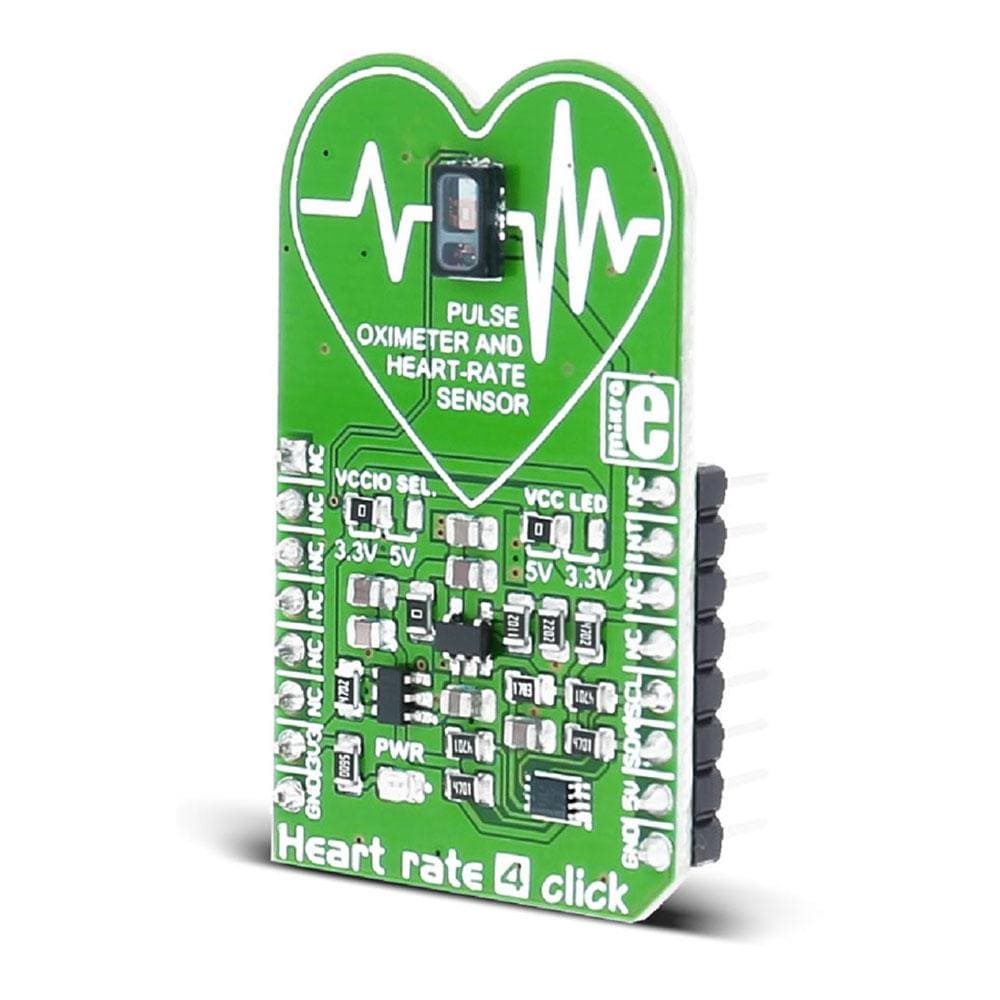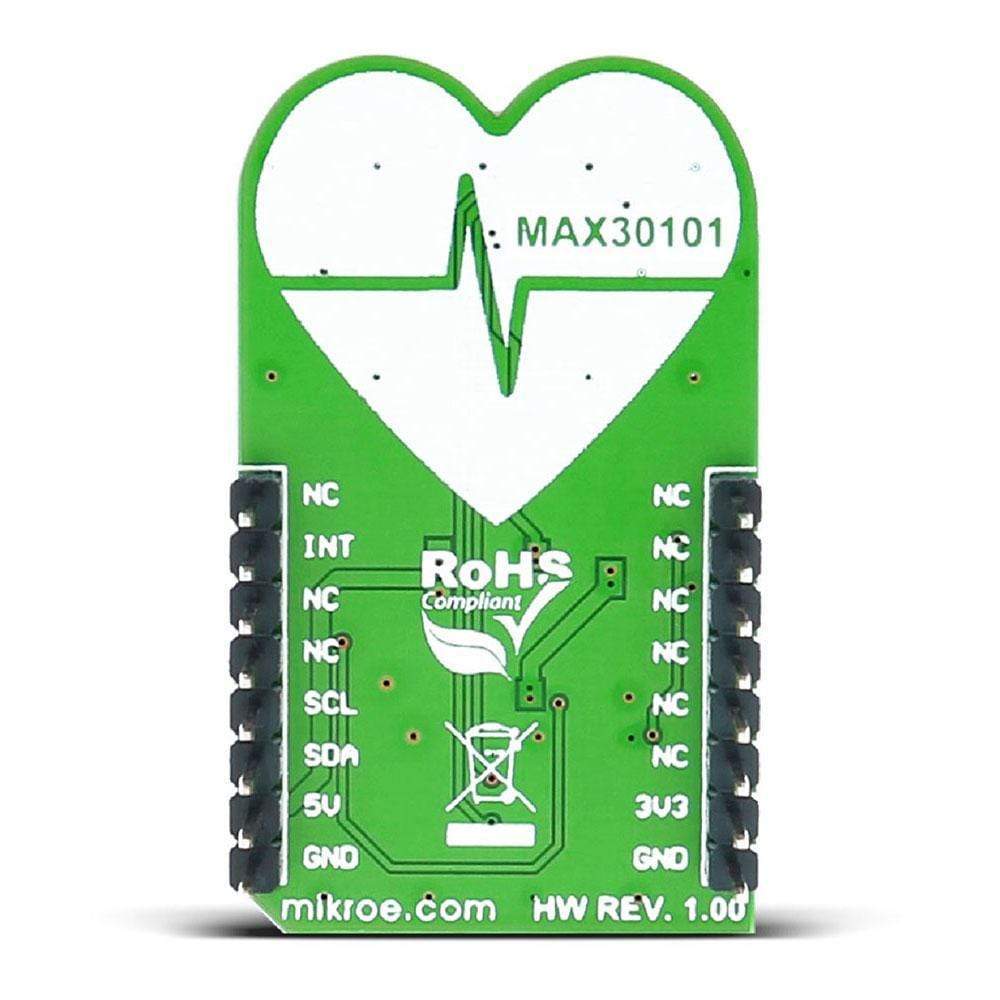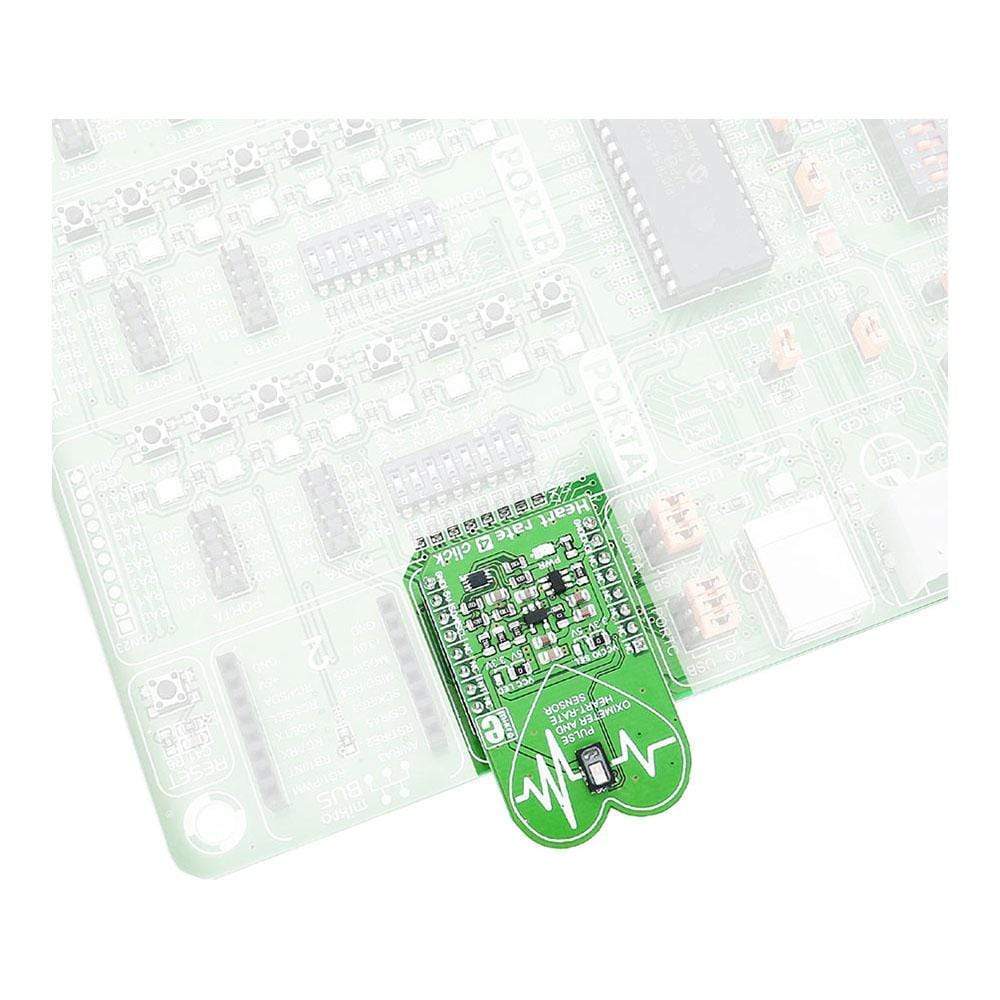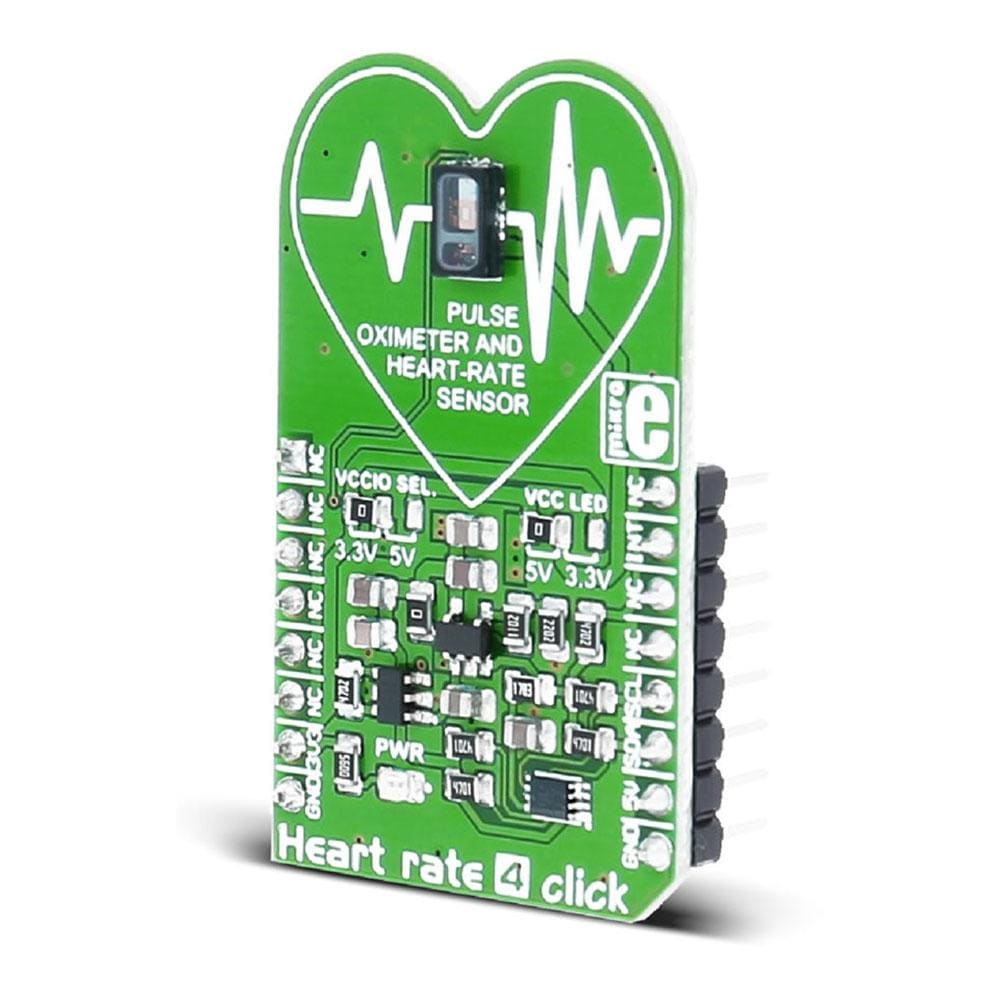
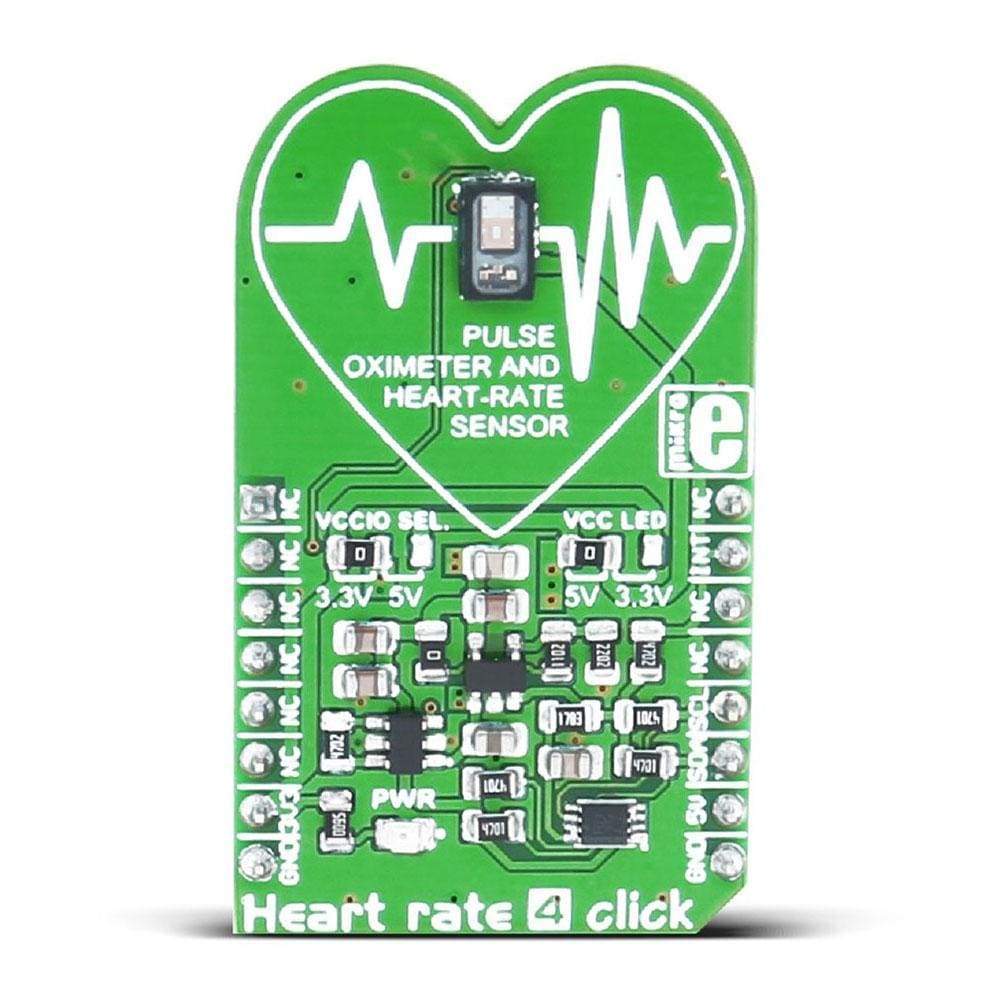
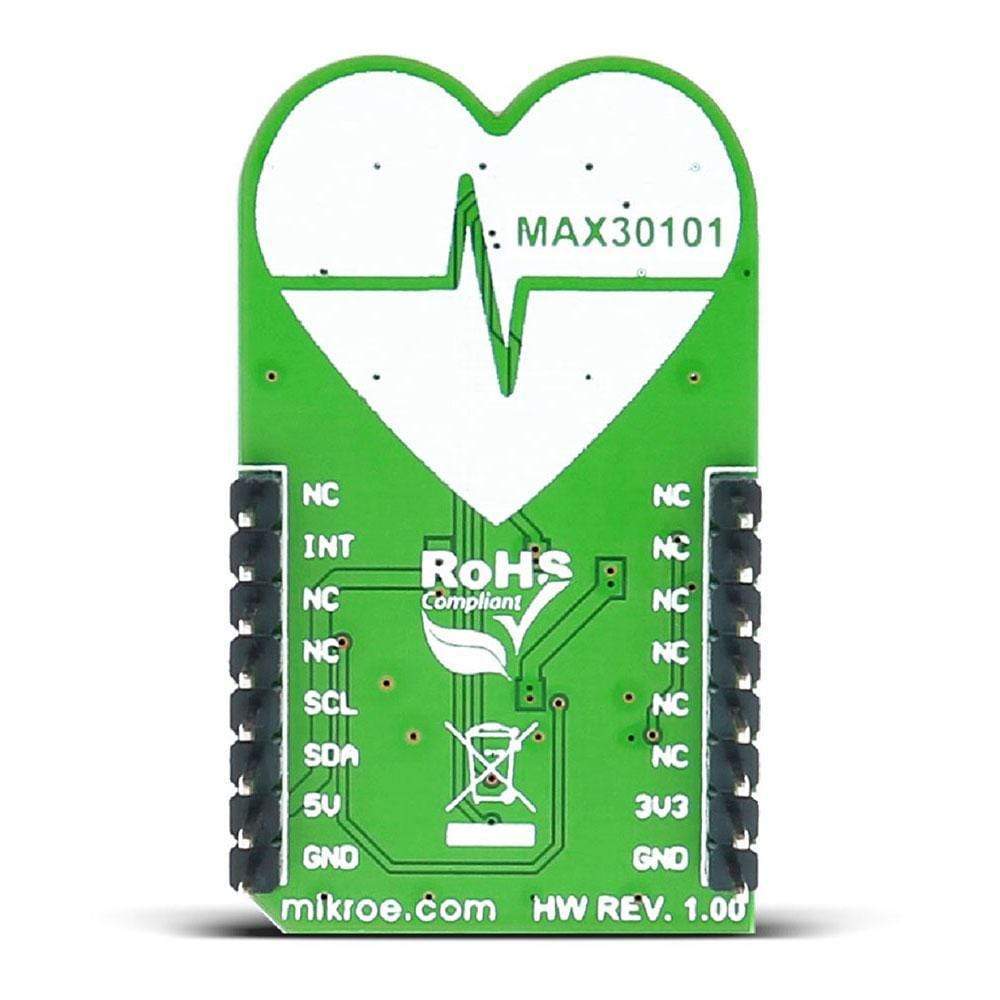
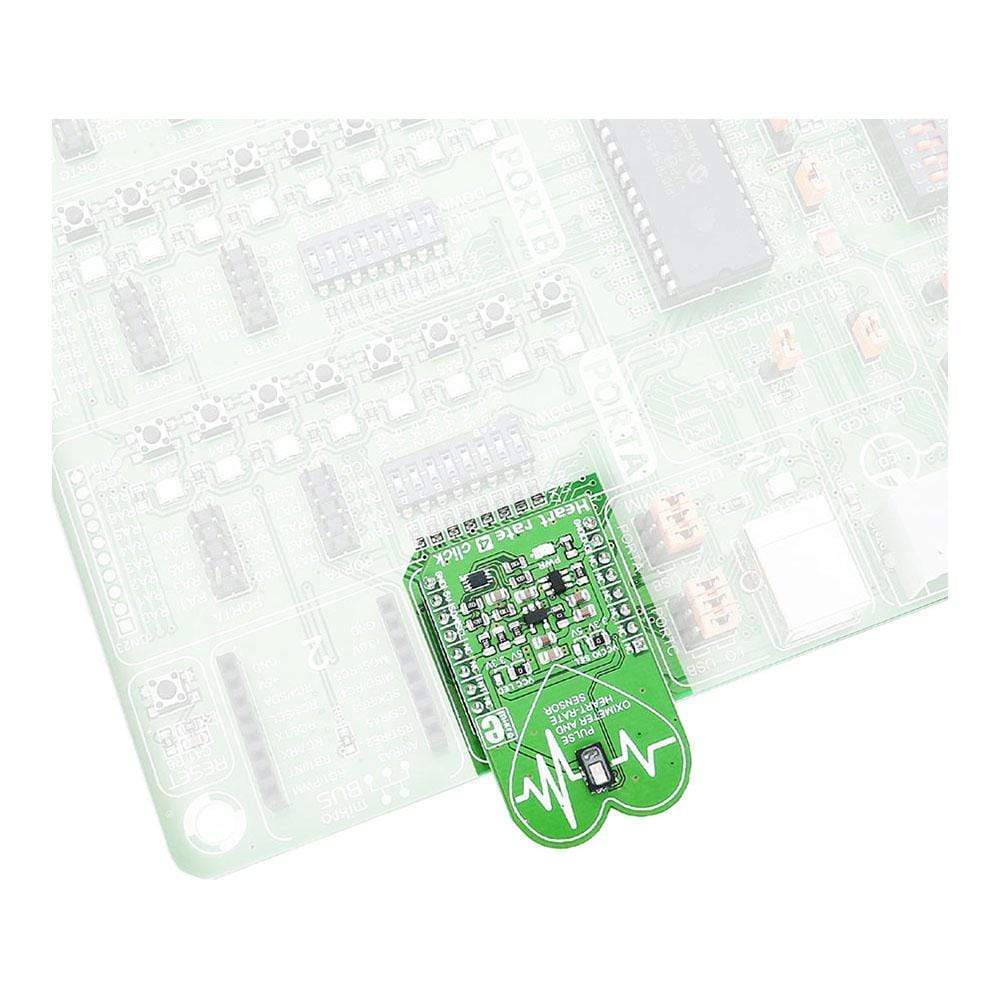
Overview
The Heart Rate 4 Click Board™ is based on the Maxim MAX30101 high-sensitivity pulse oximeter and a heart-rate sensor. The Click Board™ is designed to run on either a 3.3V or 5V power supply.
It communicates with the target MCU over the I2C interface, with additional functionality provided by the INT pin on the MikroBUSline.
Downloads
Das Heart Rate 4 Click Board™ basiert auf dem hochempfindlichen Pulsoximeter Maxim MAX30101 und einem Herzfrequenzsensor. Das Click Board™ ist für den Betrieb mit einer 3,3-V- oder 5-V-Stromversorgung ausgelegt.
Es kommuniziert mit der Ziel-MCU über die I2C-Schnittstelle, wobei zusätzliche Funktionen durch den INT-Pin auf der MikroBUS-Leitung bereitgestellt werden.
| General Information | |
|---|---|
Part Number (SKU) |
MIKROE-2510
|
Manufacturer |
|
| Physical and Mechanical | |
Weight |
0.019 kg
|
| Other | |
Country of Origin |
|
HS Code Customs Tariff code
|
|
EAN |
8606018710270
|
Warranty |
|
Frequently Asked Questions
Have a Question?
Be the first to ask a question about this.

